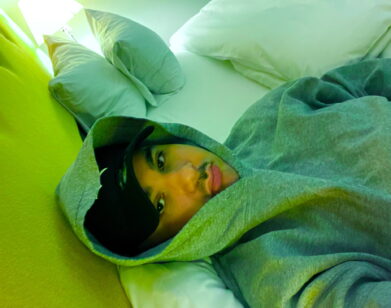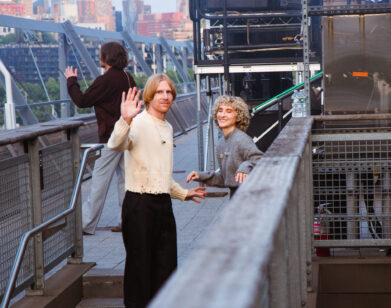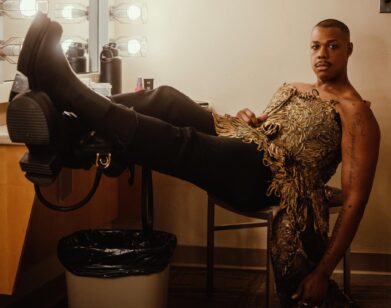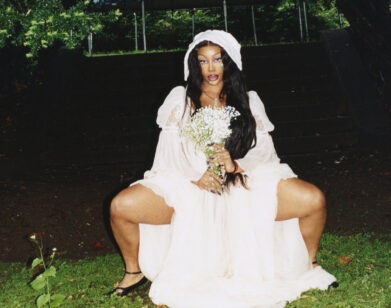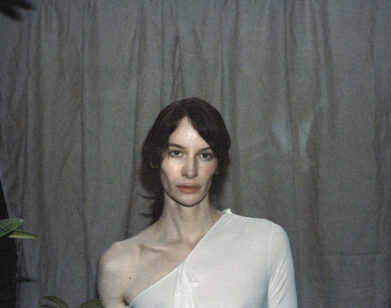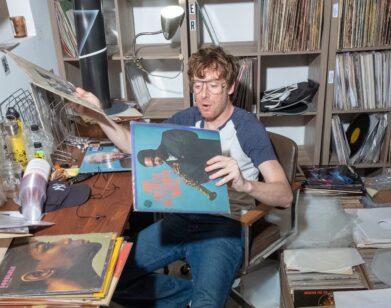Alexandra Richards: Spinning Upwards
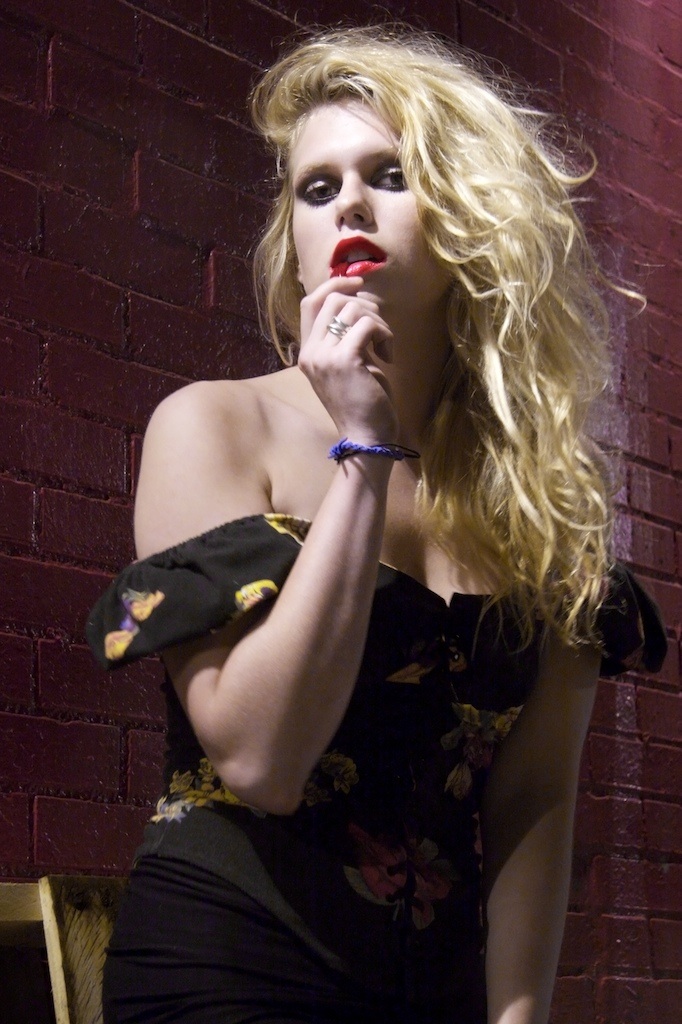
ALEXANDRA RICHARDS IN 2008. PHOTO COURTESY OF MICHAEL ANGELO
For all the bacchanalian excesses detailed in his best-selling new autobiography, Life (“Johnny [Lennon] and I were so out there that sometimes years later, in New York, he would ask, ‘What happened on that [acid] trip?'”), what is really shocking about Keith Richards is how normal his family life has been.
In contrast to Mick Jagger’s womanizing (“The tears that have been on this shoulder, from Jerry Hall, from Bianca, from Marianne, Chrissie Shrimpton… And they ask me what to do! How the hell do I know? I don’t f— him!”), Richards, after fathering three children with girlfriend Anita Pallenberg, married supermodel (and Staten Island native) Patti Hansen on his 40th birthday. The couple will celebrate their 27th anniversary this December 18th. They raised their daughters, Theodora and Alexandra, in leafy Weston, Connecticut, where Richards’ greatest excess is the amount of hours he spends haunting the local library.
We chatted with Richards’ youngest daughter, Alexandra, a model and DJ, after a recent gig at the Bowery Hotel. On a breezy, starlit terrace, she discussed the fierce collision of music and fashion in her life.
LORRAINE CWELICH: Do you play any instruments?
ALEXANDRA RICHARDS: I play ukulele and the violin.
CWELICH: Electric violin?
RICHARDS: Noooo. My boyfriend DJs as well, and he plays it.
CWELICH: Did your dad ever teach you to play guitar?
RICHARDS: My great-grandfather used to play the violin, so I think that’s why it’s been in the genes. But yes, my dad taught me to play the guitar here and there, when he was around. During the time when I was learning, my mom was really into Shania Twain and she was trying to play the guitar, so I would play with her and we were really fascinated by Shania. My dad is also obsessed with country music.
CWELICH: That is amazing to me. I thought your family would be into rock, blues, hardcore.
RICHARDS: I am a little. I love “Romeo’s Distress.”
CWELICH: What do you like to listen to when you’re just hanging out?
RICHARDS: Today I was listening to Neil Young. I’m also a big reggae fan. There’s this special Studio One release that Bob Marley came out with, Peter Tosh was working on it; it’s a raw cut from the studio and some girl breaks into the studio and starts singing on it. It’s crazy. My dad was working with them at the time. It’s a two-hour raw mix.
CWELICH: What were you spinning tonight? It was a great mix of ‘70s and house.
RICHARDS: Lately I’ve been finding remixes through the Internet and friends. It’s ‘70s samples with a lot of bass. Like Priors, Presets, Cut Copy as well, but they don’t have that ‘70s vibe. It’s rock that everybody’s been listening to lately; the Twelves, the Works. A lot of these guys sample the ‘70s, so it sounds like the Spinners, but it’s not the Spinners, you know?
CWELICH: How much of the music you like is on vinyl?
RICHARDS: I’m not technically playing from crates, like pulling up vinyl, so they’re all singles. I’m actually working through this program called Serato, so basically all of my albums are pressurized through this software program and it’s a magnetic field, where you have a blank vinyl on the actual turntable and you can scratch with it. So it’s not like you’re scratching up your records and ruining them; it’s like a new technique of basically using blank vinyls. You buy a new vinyl every other month. Also, I don’t scratch that much because I like listening to the whole song. Like my father says, “If you can’t pick the whole song, then why are you playing it?” I’d rather listen to the whole thing. I’ve been doing it for three years now. You can change it up. From your computer, the USB cord goes into the mixer, it goes left side, right side; whatever songs you want, you throw into your laptop.
CWELICH: It sounds like you’re seriously into DJing.
RICHARDS: It’s kind of funny, now a lot of people are getting into it; it makes me kind of not want to do it anymore! I’ve always loved music and wanted some part in it, but I can’t sing; I can’t write. I wrote poetry when I was 17 and look at it now, and it was so embarrassing. I’m not musically talented. But obviously, I grew up loving it.
CWELICH: So you were saying earlier that your dad tried to teach you guitar?
RICHARDS: I was 10 years old when he taught me. It was acoustic. Then he bought me my first electric guitar when I was 16; it was a pink Fender.
CWELICH: Very Joan Jett.
RICHARDS: Actually, I lent it out to a friend who’s touring now and haven’t seen it since. And it’s been six years! My pink babyback. I sound a lot better on electric than acoustic. I know blues. I know how to play chords on it, but I can never write my own stuff.
CWELICH: How did you learn the technical end of being a DJ? Did you take classes?
RICHARDS: Basically from friends and ex-boyfriends. I’m kind of a tech person, a nerd. I’ve always been the person who, when we got our Christmas presents, knew how to work them and set them up; the racecars, whatever. Sit me down in front of a computer program, I’ll be fine.
CWELICH: How do you choose what songs to play in which order?
RICHARDS: There’s this whole technique to it; you start off soft in the beginning and rise to a climax. But when you’re working a three-hour gig, how do you know when to climax? You just watch the crowd and ride the wave. If they’re not feeling a song, you move on.
CWELICH: What’s it like having a whole club full of people in the palm of your hand, controlling their mood?
RICHARDS: That’s the best part of being a DJ. Everyone’s looking at you and really, I’m a shy person; I like to stand in the back of a room, not talking to many people. But having a chance to play music, the stuff that I want to hear, and getting people going, it’s just a different kind of vibe. It’s like a different side of me.
CWELICH: Do you think you’ll continue being a DJ or focus more on modeling?
RICHARDS: I’m going to continue with modeling, which has been fantastic for me. I’m shooting a print campaign in Paris this weekend for a new French designer. Then I’m doing Fred Miller out in L.A. And I just shot for Italian Vogue. So modeling’s actually been treating me a lot better at age 24 than when I was 21. Young girls get their hopes up and have fifteen minutes of fame; it’s really sad, because there are very few models who last anymore. I know Gemma [Ward] and she’s amazing and really, she was like the last era of supermodels.
CWELICH: Your mom was one of the very first supermodels.
RICHARDS: And you know what’s funny? She was all editorial. She didn’t do runway. In that time, it was very different. There were runway models and editorial models and they were separate. Then when Kate [Moss] came in the business, that was the change; you were only going to get work if you did runway.
CWELICH: Did you do runway?
RICHARDS: I did when I was 16, 17. I had a really good run for about two years, then I moved into print.
CWELICH: What is your funniest story about your dad from when you were younger?
RICHARDS: Our nicknames for each other were “Wolfie.” We’d make these faces, but I can’t show you, because it’s very scary! We love to share funny faces together.
CWELICH: And your favorite childhood memory of him?
RICHARDS: Picking me up in his arms when he came back from being on the road. Because it meant he’d be home for a while.

